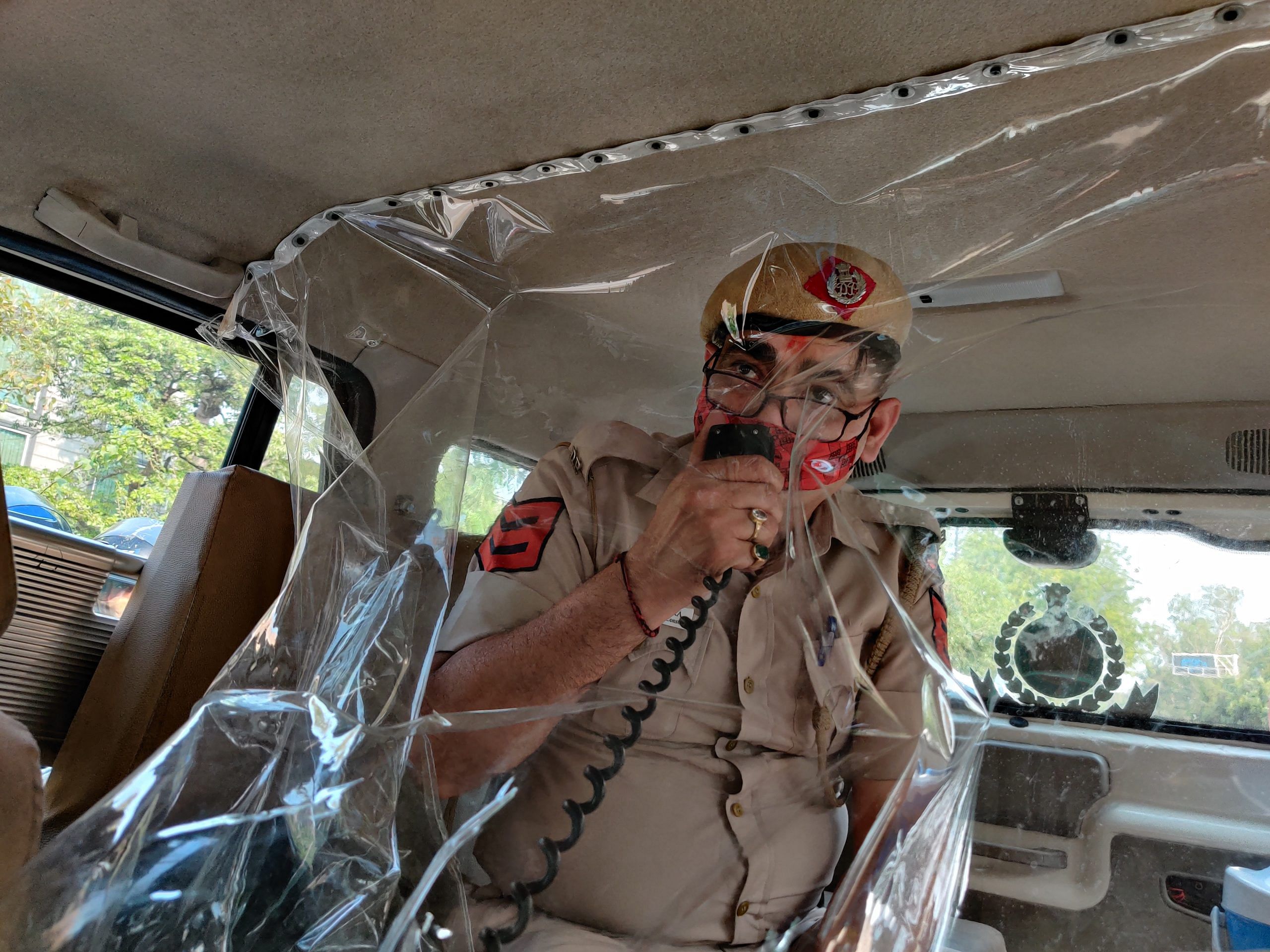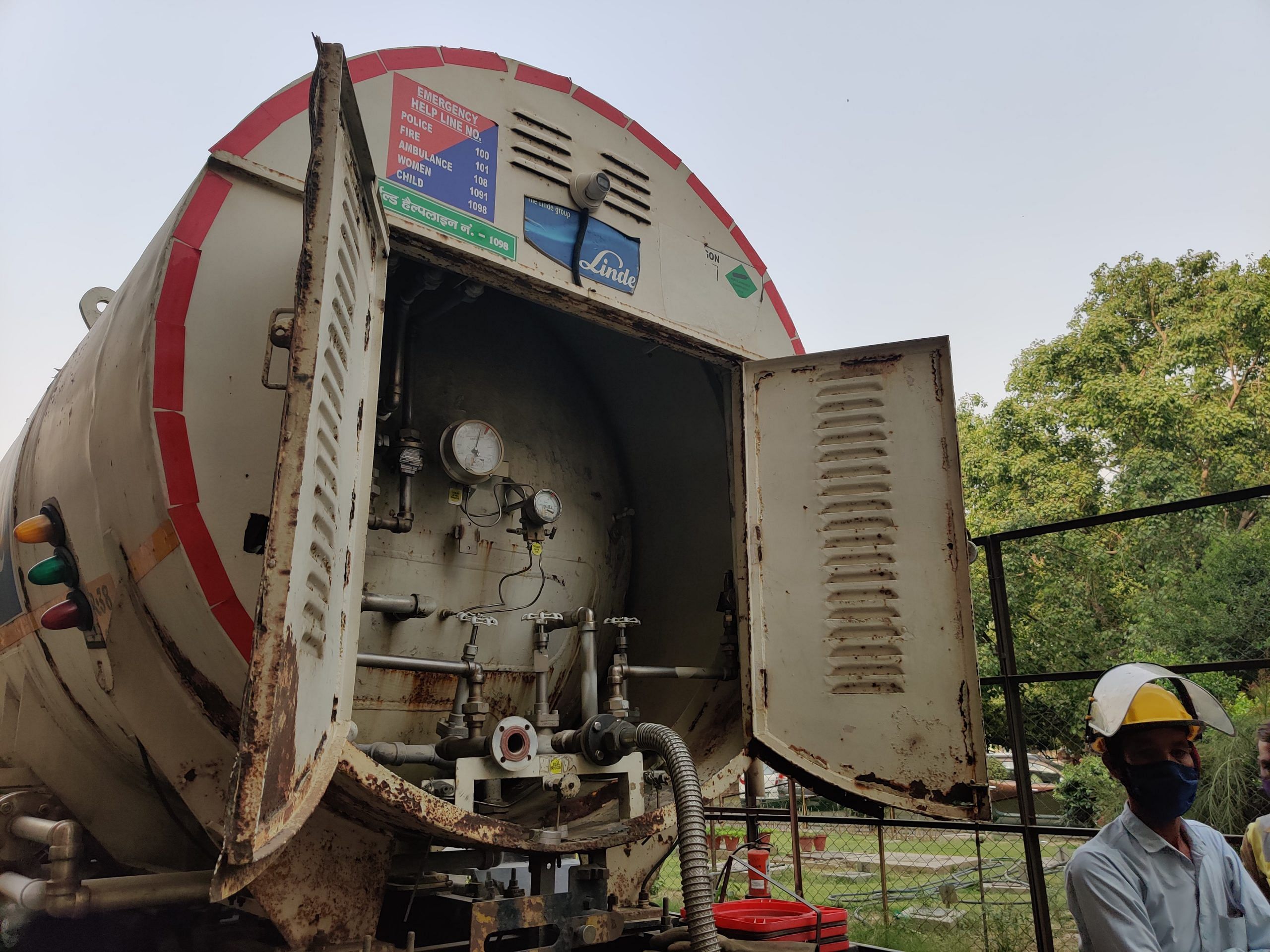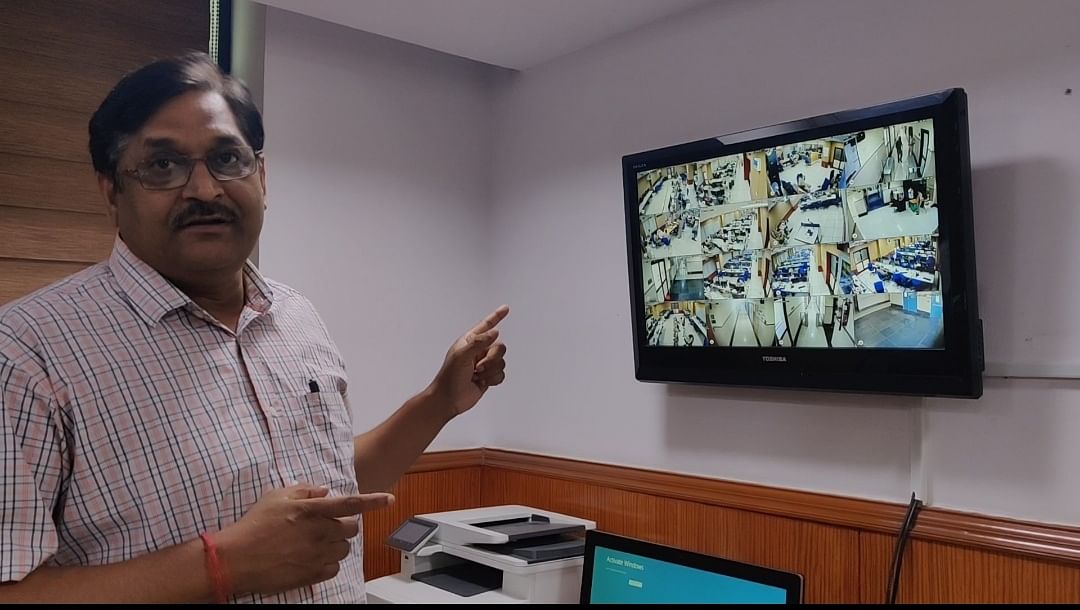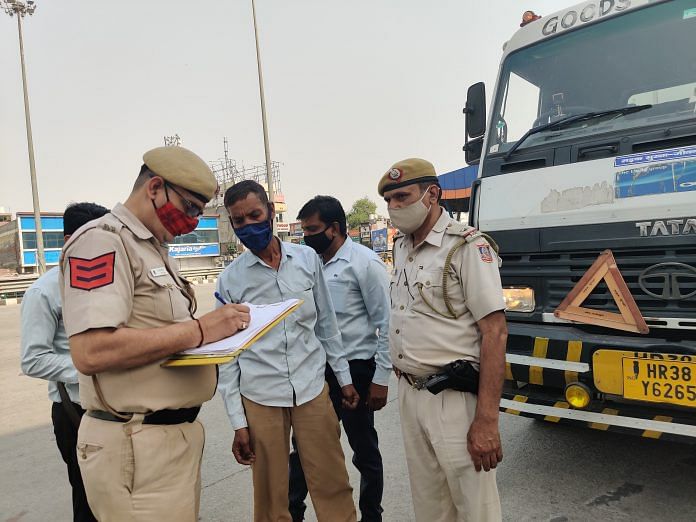New Delhi: The Delhi Police has been at the forefront in helping people through the Covid-19 crisis as people scramble for beds, medicines, oxygen cylinders, food and even funeral grounds to cremate their loved ones.
From helping senior citizens with hospital admissions and performing last rites to creating green corridors for oxygen tankers so that they reach hospitals in time — the capital’s police force has been at its feet to keep the city going.
ThePrint witnessed one such corridor created by the Delhi Police and how PCR vans have been escorting oxygen tanks to the designated hospitals.
How PCR vans operate
On Tuesday, ThePrint visited Kishangarh police station in south Delhi, which has the district command centre on its first floor.
A call was received by Inspector Sanghamitra that an oxygen tanker from Faridabad needs a green corridor to reach St Stephen’s hospital in Tis Hazari and Rajan Babu TB hospital in GTB Nagar.
The tanker, carrying eight-and-half ton of oxygen for both the hospitals, was escorted by the South East District police’s PCR van from Badarpur border.
On reaching the Badarpur border, this reporter was informed by the South East police at the spot that they will create the green corridor for the tanker.
A PCR van with one driver, who was a constable, and one head constable, follows the tanker.
Speaking to ThePrint, constable Praveen Kumar said, “We work 12 hour shifts daily. We are informed through a call about locations of oxygen cylinders and tankers and wherever help is needed. Then from the command centre, the location is messaged on our wireless set.”
“A green corridor is created so that the tankers reach hospitals hassle-free. Also, there is a risk of mishap like accidents, looting etc. We also clear the traffic so that the travel time is as minimal as possible,” said head constable Harender, who sat at the back of the vehicle.

Harender manages everything over the phone. He keeps in regular touch with the driver of the tanker informing him of the routes and ways to escape heavy traffic. He also calls up the PCR vans located on the route to inform about the tanker passing by.
“Clear the road, this is an oxygen tanker. Request you to clear the road,” he says on the mic, with the police siren blaring.
Asked if the workload has increased due to the pandemic and how he feels about it, Harendar smiled saying, “Jab oxygen milta he tab logon ke aankhon aise samakte hain jaise ki Sanjeevni Booti mil gayi ho, naya jeevan mila he. Bas wo dekh ke hum khush ho jaate hain (When people get the oxygen cylinders, the way they react as if they got the Sanjeevani Booti, got a new life. I get happy seeing that).”
After reaching the hospital, the PCR van kept waiting on the premises as the tanker delivered 5.6 kilolitres of oxygen.
A senior doctor supervises the transfer process. After completing delivery at this hospital, the tanker followed by the PCR van headed to the Rajan Babu TB hospital.

Also read: If you claim India’s Covid death toll is 2x govt figure, it’s understandable. But not 10x
Going beyond the call of duty
The police force has gone beyond the call of duty this time and helped citizens with hospital admissions, delivered oxygen cylinders on time and even performed last rites of people who succumbed to the virus but had none to cremate them.
On 12 April, a call was received by the PCR about an unidentified 60-year-old man lying unconscious in Tughlakabad extension area. The Delhi Police rushed to the spot and took the man to AIIMS where he was declared brought dead and the body was moved to the hospital’s mortuary.
A Covid test was conducted and he tested positive. Despite efforts, the man couldn’t be identified and after some local enquiry, he was declared as a rag picker.
Four days later, Assistant Sub-Inspector Dataram and Constable Ankit performed his last rites at Green Park crematorium, Delhi Police officials said.
On 19 April, the Delhi Police helped hospitalise an 80-year-old Covid-positive man to RML Hospital after his daughter called them.
On the night of 28 April, an SOS call was received through Twitter and WhatsApp groups that Rainbow Children Hospital with 71 Covid-19 infected pregnant women and children had run out of oxygen supply. The police moved swiftly, and arranged 35 oxygen cylinders on time.
Also read: More people died of Covid in Delhi in last 4 days than in Mumbai since March
Command centre turns ‘Covid war room’
Several phones keep ringing in the Delhi Police command room constantly.
A large computerised map of the national capital is displayed on a screen, and small red dots can be seen moving at rapid speed — each representative of a PCR van on the ground providing relief to residents as the capital struggles to cope with the second wave.
A fleet of 800 PCR vans operate in the national capital that are controlled by the command room. These PCRs are the first responders in case of any event.
“When an individual calls up the emergency helpline no. 112, it connects to the command room of Delhi Police. A PCR van is dispatched based on the proximity of the location and simultaneously the district control rooms also receive the information and then they alert the respective police stations,” said DCP, PCR, Esha Pandey.
Each district in the national capital has a control room that coordinates with its respective PCR vans.
ThePrint visited the command room of Delhi Police, which is also its Operations and Communication Centre. Divided into three zones — a command room, a call centre and a dispatch room — this centre tackles all distress calls.
The calls made on 112 helpline reach the call centre, which is then passed on to the dispatch room.
The command room has maps that show the exact location of PCRs, and the graphs show the number of ongoing calls.
“We have a total of 300 lines working round-the-clock. Over 250 call receivers are on one particular shift, of which there are at least 5-6 designated call receivers for Covid distress calls,” said DCP, Operations and Communication, Shive Keshari Singh.

The average number of Covid calls per day range from 1,000-1,200, he added.
“We normally get 4,500 crime calls alone, but now it has come down to 3,700 in the last two weeks. Now it’s mostly Covid distress calls,” he said.
“We get calls for medicines, senior citizens needing aid, oxygen cylinders, food for those in home quarantine. As soon as we get the call, the dispatch centre sends information to the PCR whose location remains pinned on the map and then the local police are informed,” said the DCP.
“This coordination is monitored continuously by senior officers and at one time, the percentage of calls can’t go above 80 per cent. If this happens, then it’s an alarming situation because it means that callers will end up in queue,” he added.
The average response time to calls is five-and-half minutes.
DCP Esha Pandey said, “The command centre of Delhi Police has turned into a war room, handling all Covid distress calls and helping out the people in need. PCRs are working round-the-clock to provide relief in whatever possible way.”
(Edited by Debalina Dey)
Also read: Covid testing drops in Delhi, labs say they don’t have enough staff, skilled technicians



